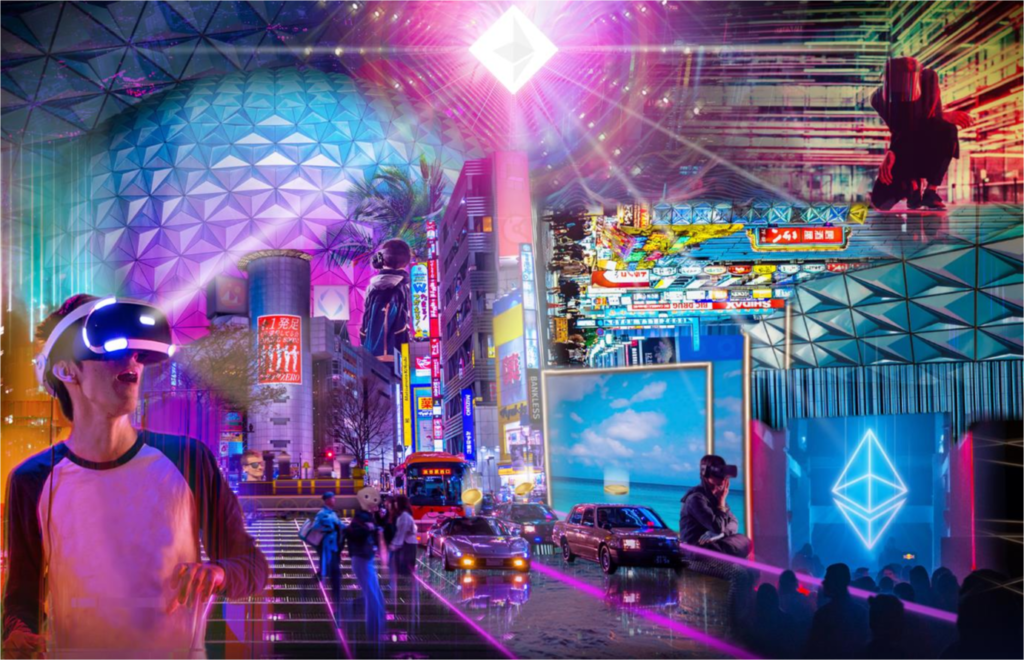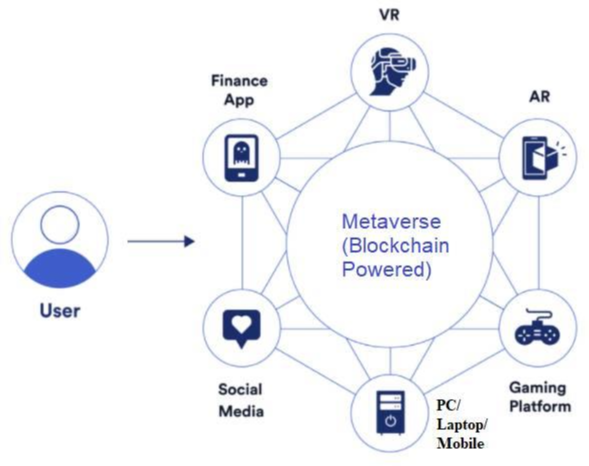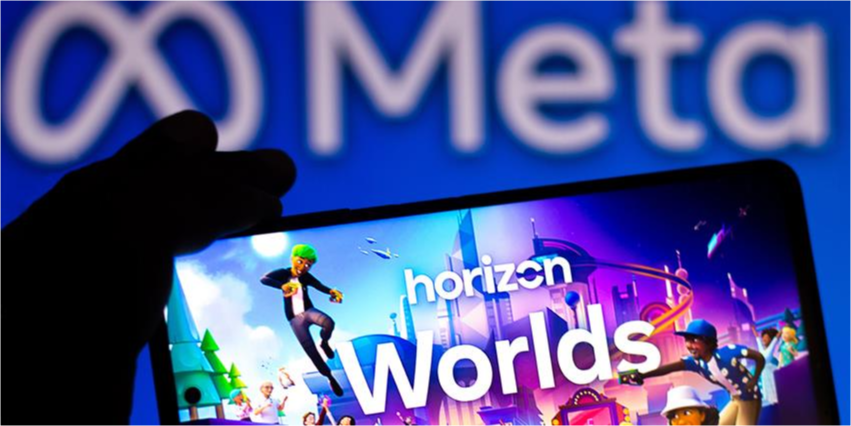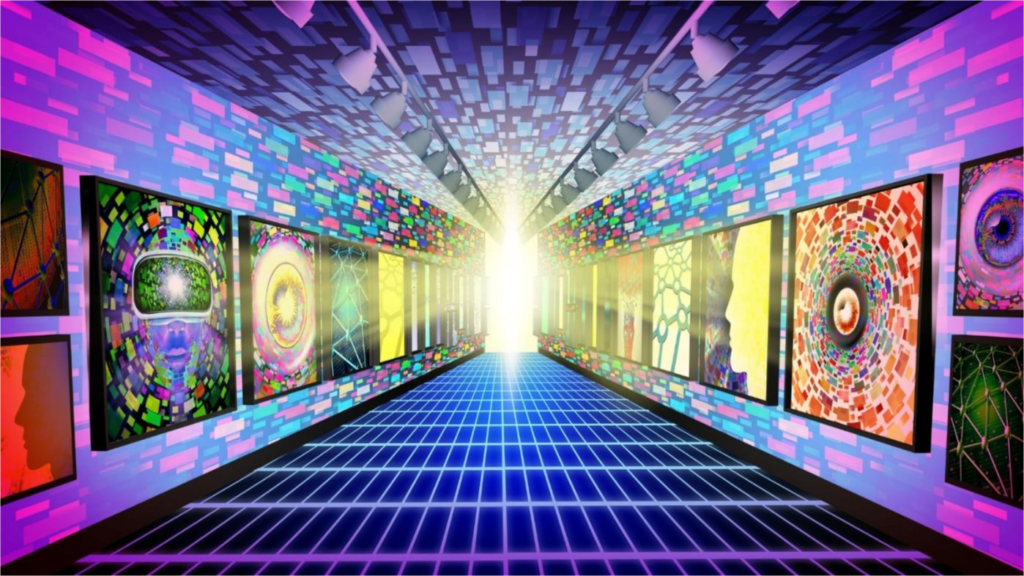Metaverse: How Close Are We to The Endless Possibilities?

What is the Metaverse?
Critically acclaimed virtual-reality based movies like Spielberg’s Ready Player One (2018) and the Ryan Reynolds starrer Free Guy (2021) has left people craving for a detailed virtual-reality world available to everyone in the real world. Although the concept is a far-fetched one, it is taking a shape of reality gradually and we can already see the glimmer of hope that in the near future we will eventually get one. This concept of a virtual-reality based world can be summarized in a single word – a “metaverse”. The “metaverse” is a term used to describe a virtual reality space where users can interact with each other and digital objects in a shared environment. It is often imagined as a collective virtual shared space, created by the convergence of virtually enhanced physical reality and physically persistent virtual reality. In a metaverse, users would be able to interact with each other, as well as digital objects, in a shared environment that is similar to the real world, but with also additional capabilities and possibilities. Apart from the endless possibilities, various mandatory equipment is also necessary to access the metaverse, making it unaffordable for each and everyone. Other than that, there is also the question of security and other risks attached to the concept of metaverse that can make people hesitant to get into it.

Possibilities of the Metaverse
The possibilities of a metaverse are vast and varied, as has the potential to enable new forms of communication, collaboration, and creativity. Some potential use cases and possibilities for the metaverse can include:
- Immersive experiences – The metaverse could provide a highly immersive experience, allowing users to interact with other people, digital objects and digital environments in a realistic and seamless way.
- Social interaction – The metaverse could enable new forms of social interaction like virtual parties, allowing users to connect with each other in real time and engage in a wide range of activities together.
- Content creation – The metaverse could provide tools for users to create their own digital content, such as virtual worlds, games and experiences, without the need for technical expertise.
- Remote collaboration – The metaverse could enable the possibility of seamless remote collaboration, allowing users to work together on projects and attend virtual meetings from anywhere in the world.
- Learning and education – The metaverse could be used as a tool for learning and education, allowing students to attend virtual classes, interact with teachers and classmates in real-time and access educational resources and materials.
- Virtual economy – The metaverse could support a virtual economy, allowing users to trade digital goods and services with each other.
- Gaming and Entertainment – The metaverse could provide a new platform for gaming and entertainment, enabling users to interact with
each other in real-time and engage in a wide range of activities, such as multiplayer games, virtual worlds, virtual concerts and performances.

Above-mentioned are just a few examples of all the different possibilities of the metaverse as it has the potential to be used in many different ways. And as technology and infrastructure continue to develop, further new possibilities will arise.
Requirements for Interacting with the Metaverse
In order to interact with a metaverse, a user requires a few mandatory equipment or technology at his/her disposal. These include:
- A device for accessing the metaverse – This could be a virtual headset, augmented reality glasses, or even a smartphone or computer with a web browser. The device would need to be able to display the virtual environment and allow for suer input, such as head and hand tracking.
- A high-speed internet connection – The metaverse is a shared, online environment, so a fast internet connection would be necessary for low- latency interactions with other users and digital objects.
- Anavatar–Userswouldneedtocreateorchooseanavatar,whichwould serve as their digital representation in the metaverse. Avatars could be customised to look like the user or take on the appearance of a fictional characters or a completely different appearance.
- Software and applications – Interacting with the metaverse would likelyrequire software and applications that are specifically designed for the metaverse. These could include social and communication tools, games, and other types of experiences.
- Virtual currency – Some metaverse experiences might even require users to convert their real currencies into a virtual currency in order to make it virtually usable in the said platform, such as Horizon which make use of a virtual currency called Horizon Tokens, to purchase digital goods and services.
It is also worth noting that the abovementioned requirements are the currently listed ones and the list is subject to change as technology develops and the metaverse evolves. Some metaverse experiences may even have different or additional requirements. Upon getting the required equipment ready, one is ready to jump into the metaverse but is the metaverse ready for the user?

Horizon: First Step Towards a Proper Metaverse
Currently, the metaverse is still largely in the realm of science fiction and there is no clear consensus on what it will ultimately look like or how it will be accessed and experienced. However, there are several companies and organizations that are working on building the technology and infrastructure to support it, noteworthy ones being – Facebook and Epic Games. Facebook announced Horizon in 2021, following which Epic Games also announced its own metaverse called Epic Metaverse, which aims to provide a foundation for a decentralised metaverse, where users can create, share and monetize their own content.
Facebook Horizon is a shared virtual world that allows users to interact with each other in a variety of ways, including through the usage of avatars, and engage in a wide range of activities, such as gaming, learning, and socializing. The platform was announced in October 2021, with initial plans of being launched in 2022, but it did not meet the announced launch date and as of Jan, 2023, is currently in closed beta testing phase. As a result of this phase, the platform is not yet available to the general public, instead only a limited number of users are being invited to test the platform and provide to the company. The goal here is to identify and fix any issues with the platform before it is launched to the general public. During this closed beta testing, users are be able to explore the virtual world, create their own experiences, worlds and games, and interact with other users through avatars. The platform apparently also includes social and communication tools that allow users to interact with each other in real- time and a virtual economy to trade digital goods and services. Closed beta users are able to access Horizon via a virtual reality headset or a computer with a web browser. The platform is free to use, but users may need to purchase certain items or experiences with a virtual currency called Horizon Tokens. Another key feature of Facebook Horizon is the Horizon Studio, that will be a part of the platform and will allow users to create 3D environments, add interactive elements and create custom avatars, without the need for technical expertise. However, the company has not provided specific details on when and how the toolset will be available to closed beta users. It is possible that Horizon Studio is being tested and refined during the beta testing phase, and will be made available to beta testers at a later date.
Facebook has not announced when the closed beta testing phase will end and the platform will be launched to the general public. It’s worth noting that, even if Facebook Horizon is launched, it’s not clear yet how successful it will be, and if it will be the metaverse that Facebook is envisioning. There are many challenges to building a successful metaverse, and it remains to be seen if Facebook will be able to overcome them. Therefore, it’s best to check for updates and announcements from Facebook for the latest information about the closed beta testing phase and the launch to the general public.

How Safe is the Metaverse?
The safety and security of the metaverse is a complex issue, as it is still a relatively new concept that is not yet fully realised. However, there are several potential concerns and risks associated with the metaverse that should be considered:
- Privacy – The metaverse would involve the collection and sharing of large amounts of personal data, such as user location, activity and interactions. There is a risk that this data could be mishandled, misused or hacked by malicious actors.
- Cyberbullying – The metaverse would enable users to interact with each other in a shared environment and this could lead to cyberbullying and other forms of online harassment.
- Online safety – Children and young people may be particularly vulnerable to online safety risks in the metaverse, such as grooming, exposure to inappropriate content and exploitation.
- Virtual economies – Virtual currencies and economies in the metaverse may be vulnerable to fraud, hacking and other types of financial crime.
- Addiction – The immersive nature of the metaverse may lead to addiction and other negative health outcomes, such as eye strain, back pain and headaches.It is important to note that these risks are not specific to the metaverse and are also present in other online platforms, but the metaverse’s immersive nature may increase the potential for these risks. Therefore, it is important for the companies developing the metaverse, like Facebook, to take these risks into consideration and to develop robust safety and security measures to mitigate them.

Conclusion
In conclusion, the metaverse is a complex and ambitious concept that aims to create a shared virtual reality space where users can interact with each other and digital objects in a shared environment. It has the potential to bring people together in a number of ways with endless possibilities and capabilities. In order to interact with the metaverse, one must be equipped with all the necessary tools and hence, it can be quite expensive and its worth can not be calculated yet. Several companies like Facebook, Google and Epic Games are working on creating their own metaverses and are building the technology and infrastructure to support it. However, it is also obvious by now that building a metaverse is a complex task and it is likely to take many years, if not decades, to fully realise. Additionally, it’s also important to consider the potential risks and challenges associated with the metaverse and ensure that robust security and safety measures are in place. The metaverse currently available to us is still in early stages of development and it will take time for the technology, infrastructure and standards to mature to the point where a truly impressive and seamless metaverse experience can be delivered.

By –
Dipankar Kalita
Diploma in Electrical Engineering Assam Engineering Institute





